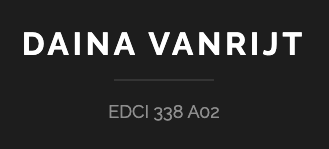• What does it mean to network using social media?
“Learning through our [Personal Learning Network] is something we can do throughout our lives – it becomes a tool for Lifelong Learning.” – Future Learn – What is a Personal Learning Network?
Whether one is maintaining relationships, looking for some feedback or guidance, exploring avenues of personal growth, or simply exploring interests — social media has enabled more individuals to seek out other individuals or groups that share some communality, some connecting credential, viewpoint, or interest. From these connecting points, relationships are shaped — whether they be temporary or longterm, professional or personal. This seeking out of others for specific functions and tasks is networking.
• How are we motivated to participate in networked publics?
“We define the activity of professional networking as the act of making connections with other professionals, with or without the intention of making long–term ties with them (Compton, 2009; Tempest and Starkey, 2004).” (Rajagopal et al.)
Motivations come from our needs and wants. The needs and wants of individuals drive our participation in networked publics. For example, to better understand the workings of the mind and theories on its development, I seek peer reviewed, scholarly articles online or through library sites. When I wish to learn more about current trends in literacy and early childcare, I connect to online groups of educators for feedback, insight, and guidance. To get help with my car, I typically join in a chat forum on the particular make and model of car I have, and then make a phone call to my dad to arrange a face-to-face chat and physical analysis of the car.
• What are the risks & rewards of public communications?
“… an ability to identify and understand other people’s work in relation to one’s own, and to assess the value of the connection with these others for potential future work. (Granovetter, 1983; Nardi, et al., 2000)” (Rajagopal et al.)
With the pandemic, exploring opportunities through one’s PLN is becoming more common as people are forced to reshape their lives. The rewards for personal and professional growth are boundless. For example, my partner enjoys editing and has been able to connect with groups and companies online during the pandemic, to help himself learn more about the field — even if only a quirky and occasional hobby of his. Since moving to our new home, I have also joined several social media groups that represent local interests and initiatives, ranging from topics of motherhood to gardening, and many other things in between. My partner has also reached out to former colleagues via Facebook Messenger and WhatsApp, to discuss possible future employment opportunities in teaching, and to gather feedback and insight as to which Masters program he may choose to pursue.
That said, putting your ideas and experiences online is risky. Once something is placed online, it can be near impossible to pull it back offline. This is especially so if the platform is public.
One has to be fully aware of this before posting, while many are not. As an educator, I see more and more teaching toward digital literacy and citizenship in curriculum — to help students navigate the murky waters of current social media.
While many platforms have protocols and codes of conduct for users, they are not always followed by clients. There are also laws that must be obeyed to ensure safety and security online. One must be aware of these things, as they impact our personal and professional lives in negative ways.
• What is a digital identity?
How we are represented online and the access to those opportunities creates our digital identity. An identity creates a starting point, from which access can be granted or denied. The way we structure or build upon our identities should be done with care, so as to move forward in the directions we want.
• How do personal versus professional approaches to digital identity affect social media use?
Right away, this question made me think about code-switching. I have always found the concept interesting. My partner is from the East Coast originally, and had that particular accent that comes from being raised in rural areas of Nova Scotia. We have spent the last number of years travelling and working and he has subtly, over time reshaped how he speaks; yet when he returns to his hometown to visit friends and family, his accent is as sharp as the day I met him.
How we behave online creates our digital identity. Just as in our lives offline, there are public and private (or more personal) elements. With online activity there is much more anonymity, which can enable users to feel more able or willing to behave in ways that they may not in their offline lives. This is where things may become murky when discussing the connections between personal (or what many may deem as private) and public interactions. They impact one another, but that impact is unique to the user and their values.
For example, my partner and I are both educators and have been working abroad at private international schools for a number of years. Many of our colleagues remain connected to us through social media like Instagram and Facebook. Some exchanges are personal and happen regularly, as we discuss our lives, the world, and our opinions outside of work. We also maintain many of our other professional connections on social media, as there is always the chance that we may one day work together again. Even though many of us call one another friends, this filters how we exchange and what we discuss to a point I’m sure. There are other, more professional relationships which are also maintained online, though with less frequency. These connections are sought out, for example, when a reference is needed to apply for work or schooling or guidance is necessary for a specific need.


Recent Comments